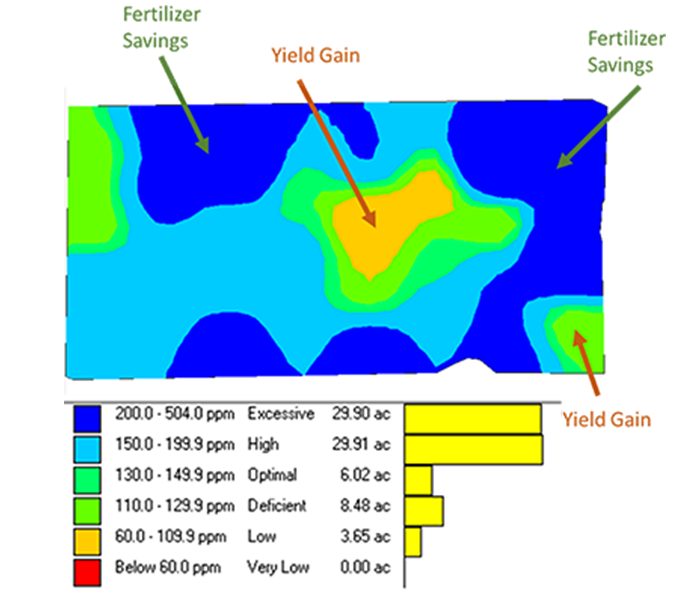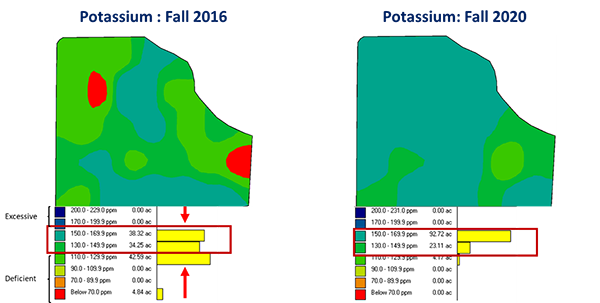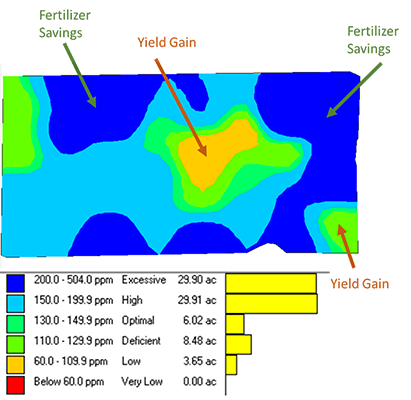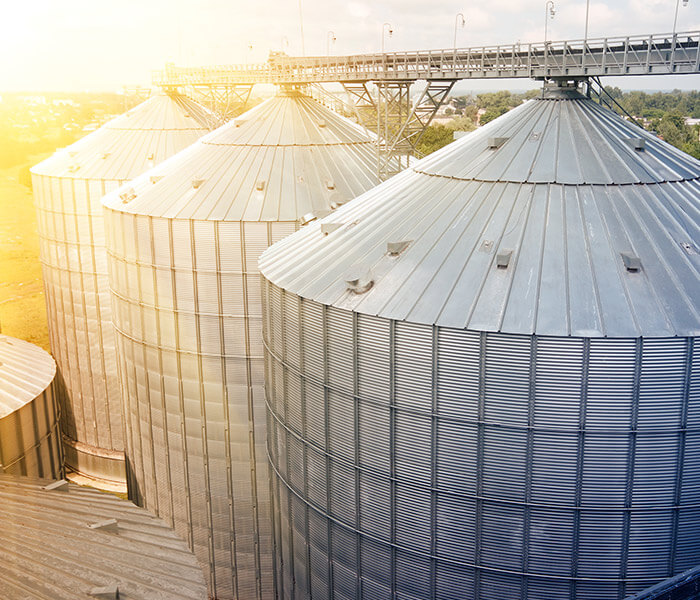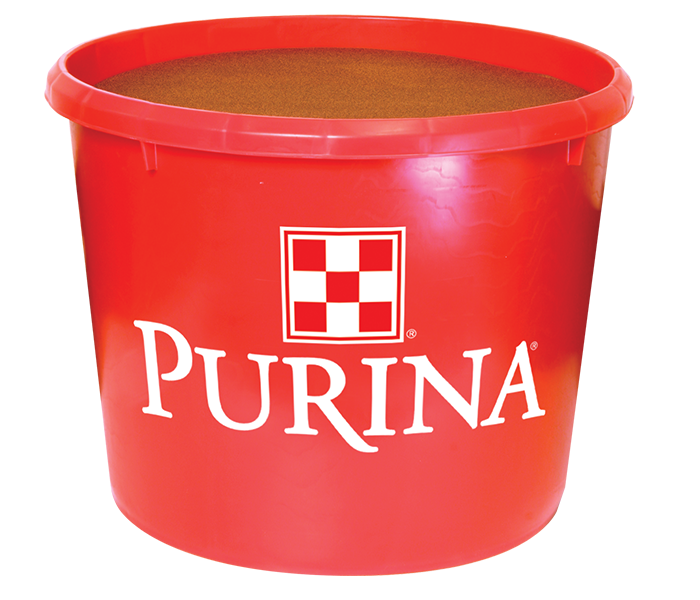Maximize your investment.
Apply fertilizer where it is needed, not where it isn’t.
Phosphorous (P), potassium (K), and soil pH have an optimal range in the soil. Underapplying fertilizer will lead to nutrient deficiency in the plant and reduced yields. Overapplying fertilizer will increase costs without improving yield. Soil tests provide the information needed to determine what rate of fertilizer will maximize yield potential without excessive cost.
Get precise with Grid Sampling and Variable Rate Spreading.
Grain yield, soil type, and farming practices such as tillage or manure application can vary within the same field, and all of these factors affect soil fertility. Over time these differences need to be corrected with a variable rate fertilizer/lime application. Grid soil sampling maps the variability in the field and creates a blueprint for a more precise fertilizer application.
Feed high yields. Manage low yields.
Yield variability exists in every field. Certain acres within a field will yield consistently higher than others due to the underlying soil and slope of the field. High yields remove more nutrients from the field and lead to lower soil fertility over time. Applying fertilizer at a flat rate means over fertilizing the lower yielding acres and under fertilizing the higher yielding acres. Variable rate spreading feeds high yielding acres the fertilizer needed to stay productive and manages low yielding acres by reducing the amount of fertilizer applied.
Optimize fertilizer plans for the needs of today.
Grid soil samples provide a much clearer picture of what is going on in the field but they are not the only factor that determines how much fertilizer to apply. Fertilizer prices, commodity prices, yield goals, crop rotation, and overall budget all determine what rate of fertilizer is best. Work with your agronomist to determine which approach is best for your operation.
